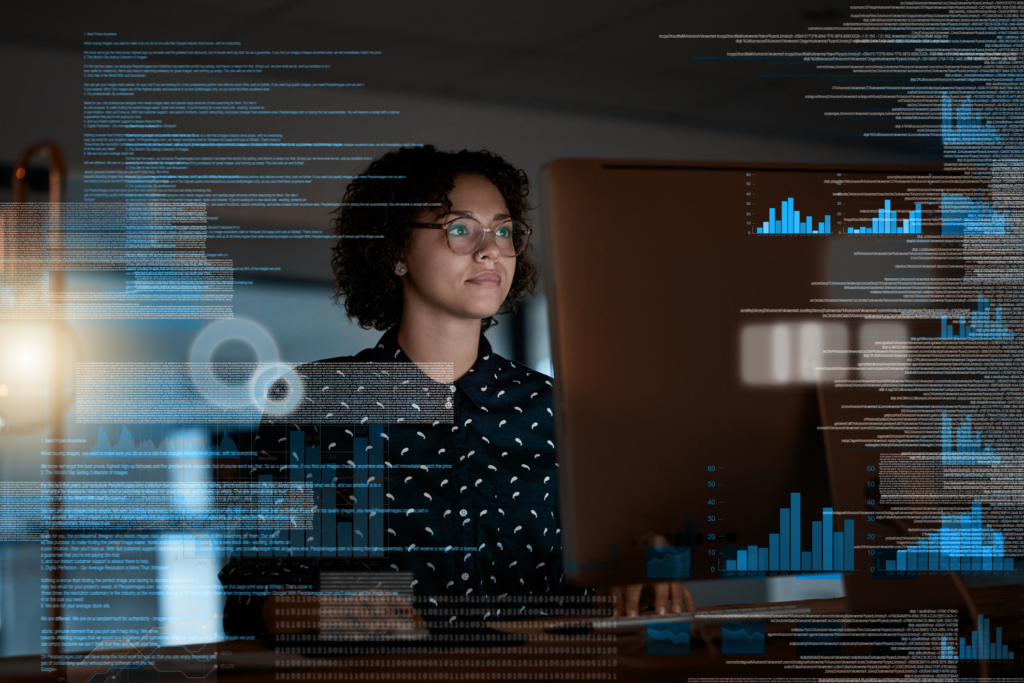At NetApp, we recognize that AI is not merely a technological tool—it’s a transformative mindset that can reshape organizations and industries. To harness its full potential, it is essential to cultivate a data-driven culture that permeates every level of your company. Our company is not alone in adopting an AI mindset. Notably, hyperscale companies are making substantial investments in AI and predictive analytics. Their role is crucial in assisting businesses in improving customer experiences and creating new revenue streams through AI-driven innovations. However, each cloud provider offers distinct advantages for AI workloads, making a multi-cloud strategy vital. AWS provides diverse pre-trained models for various generative tasks, including image, text, and music creation. Google is making strides in developing specialized AI models, such as those tailored for healthcare applications like ultrasound image interpretation. Azure’s generative AI solutions integrate seamlessly with Microsoft’s ecosystem, offering a cohesive experience for organizations heavily invested in their products. NetApp’s first-party, cloud-native storage solutions enable our customers to quickly benefit from these AI investments. For example, NetApp BlueXP workload factory for AWS integrates data from Amazon FSx for NetApp ONTAP with Amazon Bedrock’s foundational models, enabling the creation of customized retrieval-augmented generation (RAG) chatbots. This integration allows organizations to leverage their proprietary data in generative AI applications, enhancing the relevance and accuracy of AI-generated responses. By using a multi-cloud approach, businesses can take advantage of each cloud provider’s unique strengths and choose the best platform for each GenAI RAG-based project, without being limited to just one provider’s ecosystem. Moreover, multi-cloud data solutions are essential for complying with regulatory frameworks like the Digital Operational Resilience Act (DORA) from the European Union, which goes into effect this January. DORA security requirements apply to a wide range of financial institutions, including banks, investment firms, payment service providers, asset managers, and crypto-asset service providers. Additionally, it encompasses third-party information and communications technology (ICT) service providers who deliver critical services to these financial organizations, such as data analytics platforms, software vendors, and cloud service providers. DORA requires financial firms to have strategies in place to manage risk related to their third-party service providers, such as AWS and Microsoft Azure. Whether it’s a managed process like an exit strategy or an unexpected event like a cyber-attack. By using intelligent data infrastructure from NetApp, financial institutions can securely end contracts with third-party providers and seamlessly transfer training and inferencing data to a new cloud platform. This ensures uninterrupted business operations during the transition, maintains service quality for clients, and adheres to regulatory requirements. In addition, they can actively detect and safeguard the data, enabling rapid recovery in the event of an attack. NetApp believes that, even though many businesses will choose public cloud services for AI, there are compelling reasons why specific organizations may decide to run AI workloads in their private data centers or use a hybrid cloud model. For particular industries, such as healthcare, defense contracting, government, and finance, the sensitivity of their business data makes cloud-based data preparation, model training and fine-tuning, and inferencing unsuitable. Our data solutions support companies that opt for a do-it-yourself (DIY) approach with proprietary or open-source models, leverage a turn-key Converged AI solution like NetApp AIPod with Lenovo or FlexPod for AI, or adopt a hybrid model that combines data center resources with cloud-based services. NetApp data solutions support a hybrid, multi-cloud strategy AI has advanced rapidly, with models increasing in complexity, data sets expanding in size, and the demand for real-time insights becoming more crucial. Organizations can use hybrid, multi-cloud strategies to distribute their AI workloads across on-premises and different cloud environments, optimizing performance, cost, and resource allocation. NetApp has the tools necessary to make your hybrid, multi-cloud AI deployments a success: Unified data management: It is no secret that data silos slow down AI projects. NetApp’s intelligent data infrastructure unifies access to file, block, and object storage, offering configurations ranging from high-performance flash to cost-efficient hybrid flash storage. It is available in data centers, colocation facilities, and through our public cloud partners. As the only provider offering first-party, cloud-native storage solutions on all three major public clouds—Amazon FSx for NetApp ONTAP, Microsoft Azure NetApp Files, and Google Cloud NetApp Volumes—NetApp enables organizations to easily move, manage, and protect their data across various cloud platforms, reducing the strain of moving data and minimizing data silos. Integrated AI service capabilities: To leverage the unique strengths of each cloud platform with industry-specific knowledge or business-specific information, organizations need to integrate proprietary enterprise data with custom task-based models. This can be a challenging task. NetApp has developed a variety of integrated toolkits that are helping to solve this problem. Our AWS customers can deploy and manage RAG pipelines with the launch of the GenAI capability in BlueXP workload factory. With this new capability, customers can securely connect data in ONTAP with Amazon Bedrock to develop GenAI applications without having to copy it to Amazon S3. The GenAI toolkit, which supports Google Cloud NetApp Volumes, speeds up the implementation of RAG operations while enabling secure and automated workflows that connect data stored in NetApp Volumes with Google’s Vertex AI platform. NetApp’s GenAI toolkit is also in preview in Azure NetApp Files in Microsoft Azure. To have GenAI RAG-based applications that can provide the most relevant results, companies need the ability to seamlessly connect custom models from any cloud partner to their business data. Data governance: Data classification involves categorizing data based on its sensitivity, value, and regulatory requirements across multiple clouds. Our comprehensive set of features goes beyond basic data cataloging. Leveraging AI, machine learning, and natural language processing technologies, we categorize and classify data by type, redundancy, and sensitivity, highlighting potential compliance exposures. NetApp offers a range of data classification strategies tailored to the unique challenges posed by Generative AI: Data Estate Visibility: Improve the cleanliness of your data and gain knowledge about sensitive information with complete visibility of your entire NetApp data estate, both on-premises and in the public cloud Discover Personal and Sensitive Data: Our classification capabilities can











